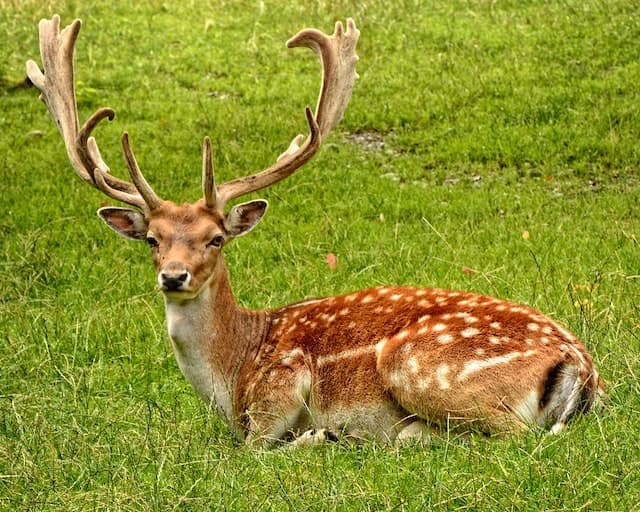Have you ever been charmed by the deer’s beautiful presence in the wilderness and wondered about the intricate details of their lives? Have you ever thought about the meaning of those odd structures scattered across the countryside that entice these gorgeous creatures to congregate? Explore the world of buck feeders to see how human contact, conservation, and nature coexist in a fascinating dance. Beyond their outward look, these simple tools serve a deeper function that provides a window into wildlife management, observation, and even scientific research.

Adding Supplemental Forage
By offering a dependable source of additional nutrition, animal feeders play a crucial role in resolving nutritional deficits in deer populations. Deer are kept alive through the regulated distribution of specially prepared feed during times when the supply of natural fodder is low, such as during hard winters or dry spells. With the help of these supplements, deer are guaranteed to acquire vital nutrients including protein, vitamins, and minerals, which support their general health and ability to reproduce. Feeders contribute to healthier fawns, stronger adults, and more robust herds by filling the nutritional gap, which eventually promotes a more adaptable and thriving deer population in their natural habitat.
Observing and photographing wildlife
Buck feeders are essential for drawing and studying these elusive animals up close for people interested in wildlife observation and photography. You can create excellent opportunities to observe and record the natural behaviors, social relationships, and eating patterns of deer by carefully positioning feeders within clear sightlines. Because of your proximity, you can photograph their anatomy and activity in great detail, revealing information about their graceful movements, eating habits, and even seasonal fluctuations. While patiently monitoring deer at feeders can reveal details about their daily activities, your photos can advance scientific research and educational initiatives and foster a greater understanding of the delicate ecosystems.
Management of Population and Hunting
A deer feeder provides a tactical advantage for hunters and wildlife managers in managing deer populations and preserving a healthy habitat. You can draw deer to places where controlled hunting is authorized by strategically placing feeders, which increases the possibility of successful and moral hunting. This focused strategy enables responsible population control, aiding in the reduction of overcrowding, which can cause habitat damage and resource rivalry. Additionally, information gathered from feeders can help decide on hunting quotas and seasons, guaranteeing sustainable harvests and preserving a balanced deer population that aligns with the environment’s carrying capacity. In this situation, buck feeders take on the role of crucial equipment for fostering the survival of deer populations as well as the preservation of their habitats.
Research and Information Gathering
Researchers and wildlife biologists conducting scientific research use animal feeders as useful tools to collect crucial information about deer behavior and population dynamics. Strategic feeder placement makes systematic observation easier and allows for the gathering of detailed data on eating habits, social interactions, and movement patterns. Researchers can determine the best ways to preserve habitat, the paths taken by migratory deer, and the effects of environmental changes on deer populations by analyzing the data gathered from these observations.
The knowledge acquired from such research advances the science of animal biology and our overall understanding of ecosystems and the complex relationships that link them. Buck feeders thus contribute significantly to our growing understanding of these amazing creatures and the complex environments they call home.
Adding to Habitat Conservation
Buck feeders are a clever way to reduce possible conflicts between deer and human activity while you work to encourage habitat conservation. By giving deer a defined space to get extra food, you can divert their foraging habits away from sensitive areas like gardens or agricultural grounds. This preventative method aids in safeguarding priceless crops and greenery while permitting deer to satiate their nutritional needs without invading private property. By using this cooperative approach, you support the preservation of local communities’ way of life as well as natural environments, promoting the coexistence of animals and human pursuits.
Education Possibilities
Buck feeders offer exciting educational opportunities outside the typical classroom for teachers, students, and wildlife lovers alike. Students can investigate firsthand the complex dynamics of wildlife behavior, habitat ecology, and the fragile balance of ecosystems by including animal feeders in the curriculum. Learners can gain a deeper understanding of animal adaptations, food chains, and the interdependence of species by studying interactions between deer at feeders. Animal feeders are useful tools for encouraging conservation and environmental stewardship among the next generation. These tools, whether used in formal education systems or unofficial nature programs, foster curiosity, critical thinking, and a lifelong love of the natural world, enabling people to take an active role in preserving our planet’s biodiversity.
Conclusion
As you consider these modest objects’ various functions, you realize that they serve as balance keepers rather than only being instruments of seduction. The purpose of a buck feeder goes well beyond its surface, regardless of whether you’re a die-hard outdoor enthusiast looking to establish a close relationship with wildlife, a responsible hunter helping to manage populations sustainably, or an inquisitive mind trying to figure out how deer behave. It connects with campaigns for environmental protection, initiatives for education, and the peaceful coexistence of people and the natural world.



Recent Comments